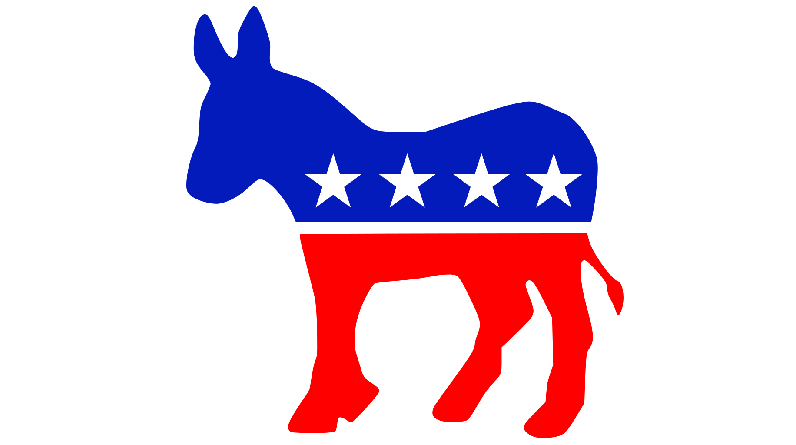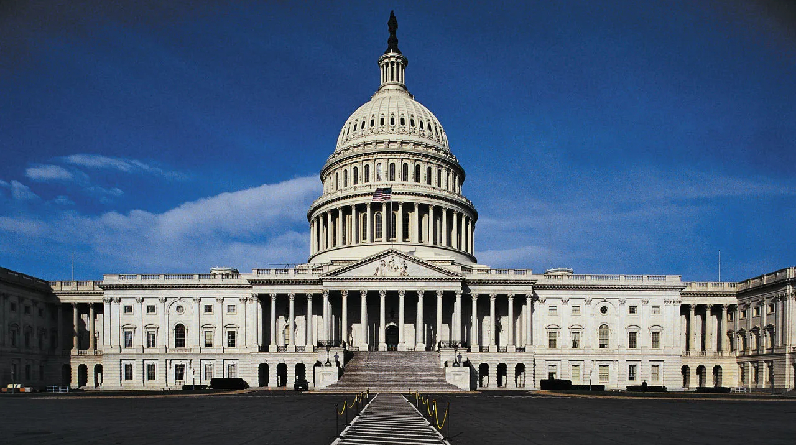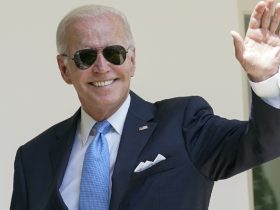The Associated Press has declared victory for the Republicans in the House of Representatives. Democrats lost the House of Representatives, but their loss is much less severe than was anticipated. They will be outnumbered by Republicans by a margin of less than five seats. In the Senate, too, the Democrats’ performance was better than expected. If they also win the Georgia runoff, they will have a 51-seat majority (Vice President Kamala Harris is the deciding vote in a 50-50 Senate).
Under almost any metric, this is a stunning victory for the Democrats (or underperformance by Republicans, depending on how you look at it). With more than a week having passed since Election Day, the initial shock has subsided, allowing for a more in-depth discussion of what the next two years of American politics will look like.
Since Democrats control the executive and legislative branches of government, it’s important to consider what the next two years will bring for the Democratic Party in particular. How the next two years will unfold on this front raises a number of intriguing and crucial questions. I can think of five right off the bat: Will Joe Biden seek re-election? (1) Two, the future of Democratic congressional leadership is uncertain. What percentage of their agenda do you think the Democrats will be able to pass? Is it possible for Democrats to reach compromises with Republicans? Can moderates and progressives work together, or will they fight?
There will be some rough patches for Democrats in the next two years. Nonetheless, if Joe Biden runs for reelection as I anticipate he will, and once the races for Democratic leadership in the House have concluded, the Democrats will be on a smooth path toward party unity.
How about a Biden run in 2024?
For the past 35 years, Joe Biden has attempted to become president of the United States. Since his failed run for the Democratic nomination in 1988, Biden has fantasised about becoming the nation’s and even the world’s leader. His dream came true in 2020, when he overthrew Trump and became president. And now that Biden has reached the pinnacle of his career, he must decide whether or not he is content with serving one term as president or whether or not he wants to run again.
Politicians with as much drive as Biden rarely give up on their ambitions. I can only think of one plausible explanation for Biden’s possible decision not to seek re-election in 2020: his health. By the 2024 election, Biden will be 81 years old, and it’s not hard to imagine that he could suffer a serious health incident that would make it impossible for him to carry out the duties of the presidency. Even if that doesn’t happen, there’s always the chance that a viral video will be used to support the idea that Biden is too weak and old to be president. Both scenarios have the potential to put enough pressure on Biden to make him hand over the presidency to someone else.
In any other case, however, I seriously doubt that Biden will leave his post before his time. The success of the Democrats in the midterms has revitalised Biden’s career. Biden can use the party’s midterm victory as ammunition to counter any calls for him to resign as party leader from within the Democratic Party. The official announcement, according to Biden, will come “early next year.” I suspect the decision has already been made, but we’ll have to wait and see.
Congress is Led by Democrats

After 20 years at the helm, House Minority Leader Nancy Pelosi announced her resignation this past Thursday. It’s inevitable that this will set off a power struggle within the Democratic conference. It remains to be seen exactly what Pelosi’s longtime deputies—Steny Hoyer from Maryland and James Clyburn from South Carolina—plan to do. A new generation of Democratic leadership would be inaugurated if they decided to retire from leadership alongside Pelosi, as seems likely at this point.
It will be extremely difficult for those who aren’t already familiar with the players in the Democratic leadership to keep up with the fierce, unpredictable competition for jobs at all levels, no matter what Clyburn and Hoyer decide.
Take the race to become the minority leader, for example: Hakeem Jeffries, the current fifth-highest ranking Democrat in the House and a Pelosi ally, can be found in corner A. However, Jeffries is reviled by some on the left because he established Team Blue PAC, an organisation that aimed to safeguard Democratic party incumbents from being challenged in a primary election but was seen by progressives as an attempt to stifle progressive insurgents. Hoyer and Clyburn, in squares B and C, respectively, may not be ready to follow Pelosi out of the speakership and may feel that it is their time to take over the Democratic Conference. In square D, we have the potential challenger to moderate (or “corporate”) Representative Hakeem Jeffries from the progressive wing of the caucus.
If I had to choose, I’d back Jeffries. He is already a leader within the conference and enjoys widespread support. He’s a radical departure from the party’s current leadership, a group of elderly white men in their 80s. He’s also young and Black. How this will actually unfold, however, is anyone’s guess. The race will be difficult to follow due to its complexity, reliance on a large number of interconnected relationships and characters. The same holds true for every other top Democratic position, from whip to caucus chair to caucus vice chair to chair of the Democratic Congressional Campaign Committee and beyond.
Once again, the actions of Hoyer and Clyburn will determine the course of these conflicts. There will be a mad dash for their leadership positions if they resign. Even if they do decide to stay, they may find themselves challenged by younger competitors who see their opportunity. In any case, it will be worth becoming familiar with whoever comes out on top in these leadership fights, because they will likely be pivotal figures within the Democratic Party for years to come.
Senate manoeuvring, meanwhile, is dull and straightforward by comparison. Rep. Chuck Schumer (D-NY) will continue in his role as the Senate’s Democratic Majority Leader. In addition, both of his most trusted underlings, Dick Durban and Patty Murray, will continue in their current positions.
Policy Priorities in Congress

Democrat lawmakers will be unable to pass any significant legislation. After it became clear that Republicans would take control of the House, any hope they had of building on the previous two years and passing more of their agenda quickly faded away. However, the Democrats may benefit politically from this setback if it prevents them from pushing through an unpopular progressive agenda. If Democrats had pushed through a massive spending package like the $2.4 trillion Build Back Better legislation that passed the House, they would have likely gotten much more pushback from voters in the midterm elections. Now that the Republicans control the House, Democratic leaders don’t have to worry about enforcing policies that voters oppose.
However, that is not to say the Democrats will be powerless. Since Democrats now run the Senate, Vice President Biden can continue to fill the federal bench with progressive and diverse judges. Like when he cancelled billions in student debt, he could continue to sign executive orders (sometimes of questionable constitutionality) to push progressive priorities. Lots of other things come to mind that Biden could try to accomplish with the presidential pen: The progressive wish list includes declassifying cannabis from the most restrictive Schedule I category, expanding access to federal aid by recalibrating the definition of poverty, limiting oil drilling on federal lands, and many other measures to curb the fossil fuel industry.
On the other hand, the president can only do so much by himself. Democrats will require some degree of bipartisan support to pass any legislation.
Chances for Bipartisanship
During his time in Congress and as vice president, Joe Biden earned a reputation as a bipartisan dealmaker. To the point that progressives attacked him during the presidential primary for his friendships with racist and segregationist senators in the 1970s, he made a point of befriending colleagues across the aisle. Several major pieces of legislation that Biden has championed during his first two years in office have received support from both parties. These include measures to improve gun safety, improve infrastructure, and increase semiconductor investments. It’s true that Biden’s bipartisan credentials took a hit when he called his Republican opponents “semi-fascist,” but he’s still a guy who enjoys a good old-fashioned compromise at heart.
As a result, I have some hope that Democrats and Republicans will make an effort to cooperate on bipartisan legislation. They probably won’t be able to come to an agreement on hot-button issues like immigration or healthcare, but there is enough overlap between policy areas that some bills could make it through the House and Senate.
There is room for negotiation on three policy fronts in particular. The primary one is dealing with the danger that China poses. Earlier this year, Congress passed a bill to invest in domestic manufacturing of technology; to strengthen the non-China supply chain; to further restrain trade with China; to force TikTok to split from its Chinese owner, Bytedance; and to provide military support for Taiwan.
See Also: Six Of The Trendiest Mens Suit Styles Right Now
The second potential area of agreement between Republicans and Democrats is the regulation of “big tech.” Senator Josh Hawley (R-Missouri) and Senator Elizabeth Warren (D-Massachusetts) are just two examples of the populist politicians on both sides of the aisle who believe that America’s major technology companies are corrupting the minds of their constituents. Politicians on both sides of the aisle are concerned about the monopoly power of tech giants like Facebook, Apple, and Amazon, although their diagnoses for exactly what’s wrong can diverge (Democrats are generally worried about dis- and misinformation, while Republicans are more concerned with censorship and biassed content moderation).
Third, criminal justice issues have the potential to be a bipartisan area of agreement. Conservatives who lean libertarian tend to support criminal justice and police force reforms. Furthermore, in 2018, Republicans and Democrats worked together to pass the First Step Act, a bipartisan bill championed by Republican Senator Tim Scott and signed into law by President Donald Trump. The First Step Act made several reforms to federal prisons and criminal sentencing and instituted programmes to decrease recidivism. Perhaps a Second Step is possible here.
It’s also possible that some hotly contested policy areas will find surprising consensus among Democrats and Republicans. Although immigration is a divisive topic, the GOP could possibly compromise and pass the Dream Act in exchange for increased funding for border security. Alternatively, populists may unite to make it illegal for lawmakers to trade stocks in their personal capacity. Smaller or less visible bills, such as streamlining the bank account opening process or simplifying the permitting process (both of which are pet projects of Joe Manchin and seem to have Republican support), might also pass (an issue on which Republican Tim Scott and Democrat Catherine Cortez Masto have worked together). That is to say, I wouldn’t completely rule out the possibility of bipartisanship, despite the tenor of politics.
The Choice: Polarization or Party Unity
One cannot ignore the fact that the upcoming battles for Democratic leadership in the House will be heated. What’s more, the presidential primary is likely to be a fierce battle between moderate and progressive wings of the party, especially if I’m wrong and Joe Biden decides not to run for reelection.
But once the leadership team is in place, and if Biden announces his reelection campaign, there’s reason to believe that Democrats will be relatively unified over the next two years. There will be no shortage of right-wing scapegoats for Democrats to attack, what with Trump’s candidature, the arrival of DeSantis on the national scene, and the prospect of Republican investigations that Democrats view as frivolous.
And Democrats learned last week that opposing the Republican Party in elections is a viable strategy. With the stakes so high heading into 2024—many Democrats see a second Trump or a DeSantis presidency as a threat to the country’s very existence—the party will find it morally and electorally necessary to tamp down internal squabbles and unify against the GOP. Since Democrats have little chance of passing a positive agenda with Republicans in control of the House, there won’t be any disagreements over how far to push their legislative goals.
Even some of the more progressive Democrats have begun to form protective enclaves. For example, just three years ago, Elizabeth Warren was slamming Joe Biden for being too moderate on social issues, but in a recent New York Times opinion piece, she praised him for his recent electoral success in the midterms. This isn’t to say that Democrats will suddenly become a unified front, or that all internal party disputes will simply disappear, but it is likely that many disagreements will be avoided or handled discreetly. The unity will look especially stark when compared with the intraparty feuds that are barreling toward the GOP.
Advice for Readers of Political Commentators
The tight margins in both the Senate and the House mean that there is a good chance of something unexpected happening and changing the course of American politics. The status quo in politics is always vulnerable to being disrupted by anything from a political scandal to a renegade progressive or conservative to a stubborn moderate. And while the outcome of the Georgia election won’t determine which party has the majority in the Senate, it will determine how much room Democrats have to lose the support of moderate senators like Joe Manchin and Kyrsten Sinema.
Everything, in other words, hinges on the whims of political fate and the motivations of hundreds of politicians. It would be foolish to assume we know exactly how the next two years of politics will play out. Given the stakes, it would be irresponsible not to at least try.






Leave a Reply